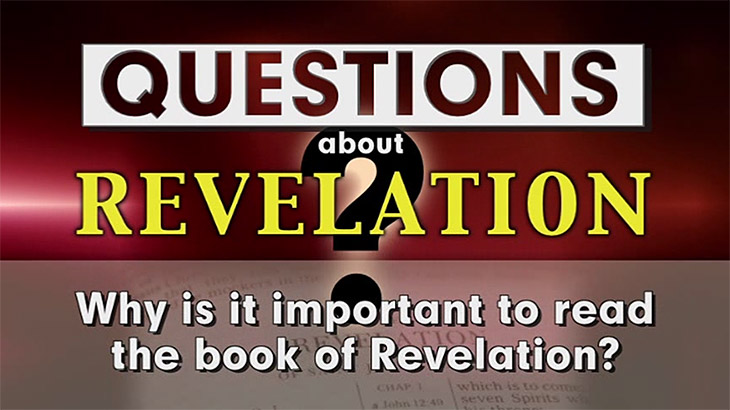
Over the next few weeks we will continue to share with you the opinions of 13 Bible prophecy experts concerning various questions related to the book of Revelation.
#2. What are the keys to understanding the book of Revelation?
Mark Hitchcock, Faith Bible Church
I think there are couple of keys to understanding the book of Revelation. One is where we have to understand that the book of Revelation has been described as the Grand Central Station of the Bible. It’s where all the trains come in. So, we really have to understand from the Old Testament a lot of the imagery that is used there. We have to understand that a lot of the symbols in the book of Revelation are taken from the Old Testament, a lot of these allusions. When we understand these things we can understand the book of Revelation better.
The other thing I think is very important is understanding the book of Revelation is filled with symbols, but the symbols that are there are symbolic of something that’s literal. We know that from the very first chapter. Jesus kind of gives us the key to interpreting it. Remember Jesus is standing in the middle of seven lampstands and it says He holds seven stars in His right hand. Well, Jesus goes on to say those seven lampstands are the seven churches, and the seven stars are the messengers of those seven churches. Jesus I think there is giving us the key to how to interpret this book. He is saying when you see a symbol in this book, that symbol stands for something that is literal. Follow that rule as you go through the book and use the immediate context within Revelation. Some of the symbols tell us right in the context what they are. Couple that with going back to the symbols explained in the Old Testament, and you can understand what the book of Revelation means.
Al Gist, Maranatha Evangelistic Ministries
The thing that probably scares most people concerning Revelation is all the symbolism that Jesus used in it. They look at it and they get confused and they conclude, “Well, I just don’t understand.” But, the Bible is its own best interpreter of what it means concerning symbolism. We should always take Scripture literally wherever possible, but we accept that there is certainly a lot of symbolic talk in it, and certainly in the book of Revelation. Where we find places where symbolic language is used, the best thing to do is get your concordance out and find other places in the Bible where a similar phrase is used, and the Bible itself will tell you the meaning behind that symbol.
We live in a world full of symbols. You drive down the street and every sign that you see is a symbol. It communicates a certain message. When we read something, the printed material is itself just a symbol. So, we shouldn’t be afraid of symbols.
Remember that in the Bible behind every symbol is a literal meaning. It’s written in symbolic language because God intended for His people to understand it, but for it to be confusing to the world at large. People who do not possess the Spirit of God will never understand Revelation.
Symbolism I guess is probably one of the biggest problems to understanding Revelation, but beyond that I think that people should just take time like any Bible study and carefully go through it. Understand step-by-step the pieces, and eventually those pieces begin to come together and it makes a great deal of sense.
Don Perkins, According to Prophecy Ministries
One of the major keys I found is learning Revelation is from the table of contents in the book of Revelation. In Revelation 1, Jesus gives the table of contents. John was commanded to write the things that he had seen, the things which are, and the things which shall be here after. That is literally the table of contents. In Chapter 1, John sees the things that were written up to that time, or past tense. Chapters 2 and 3 deal with the things that are present, or the present Church Age. I would even say today we are still in Revelation chapters 2 and 3. Then chapters 4 through 22 deal with the things that shall be hereafter. To me, that’s one of the major keys to understanding the book of Revelation.
August Rosado, Today in Bible Prophecy Ministries
I would say the key to understanding the book of Revelation is it’s literal interpretation. We get into all kinds of doctrinal trouble when we approach the book of Revelation from an allegorical viewpoint. We just get into a big doctrinal mess. If the plain sense makes sense don’t look for any other sense, or you’re going to end up with a lot of nonsense. And, there is a lot of nonsense out there today. So, we need to approach the book of Revelation from a literal, historical and grammatical interpretation. It fits like a hand in a glove when we always approach the Bible from a literal interpretation standpoint.
Ed Hindson, World Prophetic Ministry
I think first of all you have to understand the structure of the book. It’s got seven basic simple points to it. It opens with a preface in chapter 1 where Jesus commissions John on the Island of Patmos to write the book of Revelation. Secondly, it moves to a proclamation, “the letters to the seven churches on the mainland of Asia Minor.”
Thirdly, there’s a problem that has to be resolved, as John is caught up in the heavens, and in the heavenly vision he sees a seven sealed scroll. He wonders who is worthy to open the scroll. Only one person in the whole universe is worthy to do that — it’s Christ the Lamb who appears. He’s the answer to the problem.
Fourthly, you have a process of judgment that follows in chapters 6-11 as Jesus opens the seven seals of judgment. Then, out of the seventh seal the seven trumpets of judgment sound, and those are the great judgments of the Tribulation period that are then described in the book of Revelation.
Fifthly, right in the middle of the book you have a list of the seven symbolic players in the great end time’s drama. Those symbols tell you who’s who and who is doing what in the end times.
Sixth, you have the final plagues — the seven bowls of judgment in chapters 14-19 that cumulates in the fall of Babylon, the triumphal Return of Christ, and Jesus’ victory at the Battle of Armageddon.
Finally, the close of the book in chapters 20-22 is the postscript. You have the Millennial Kingdom and the New Heaven and the New Earth.
There’s the whole book of Revelation. See, it’s not that hard.
In the next part of this series on reading and understanding Revelation, the remaining members of our panel of Bible prophecy experts will continue to answer, “What are the keys to understanding the book of Revelation?”










Excellent! So am in agreement that the symbolism represents something literal. It is all through the bible old and new testament. I think your outline is very helpful also. It definitely is study time. Thanks.